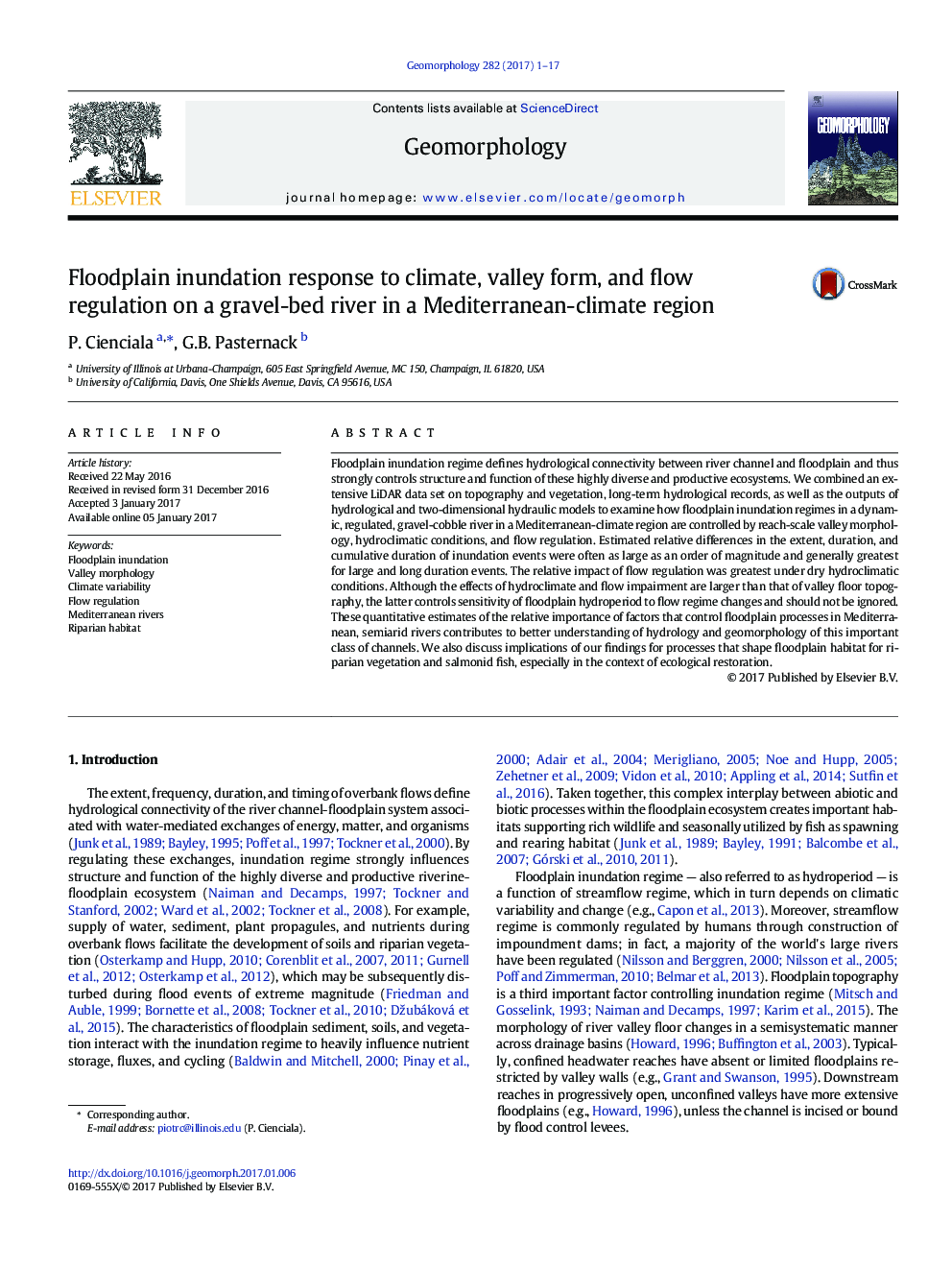| Article ID | Journal | Published Year | Pages | File Type |
|---|---|---|---|---|
| 5781113 | Geomorphology | 2017 | 17 Pages |
Abstract
Floodplain inundation regime defines hydrological connectivity between river channel and floodplain and thus strongly controls structure and function of these highly diverse and productive ecosystems. We combined an extensive LiDAR data set on topography and vegetation, long-term hydrological records, as well as the outputs of hydrological and two-dimensional hydraulic models to examine how floodplain inundation regimes in a dynamic, regulated, gravel-cobble river in a Mediterranean-climate region are controlled by reach-scale valley morphology, hydroclimatic conditions, and flow regulation. Estimated relative differences in the extent, duration, and cumulative duration of inundation events were often as large as an order of magnitude and generally greatest for large and long duration events. The relative impact of flow regulation was greatest under dry hydroclimatic conditions. Although the effects of hydroclimate and flow impairment are larger than that of valley floor topography, the latter controls sensitivity of floodplain hydroperiod to flow regime changes and should not be ignored. These quantitative estimates of the relative importance of factors that control floodplain processes in Mediterranean, semiarid rivers contributes to better understanding of hydrology and geomorphology of this important class of channels. We also discuss implications of our findings for processes that shape floodplain habitat for riparian vegetation and salmonid fish, especially in the context of ecological restoration.
Keywords
Related Topics
Physical Sciences and Engineering
Earth and Planetary Sciences
Earth-Surface Processes
Authors
P. Cienciala, G.B. Pasternack,
